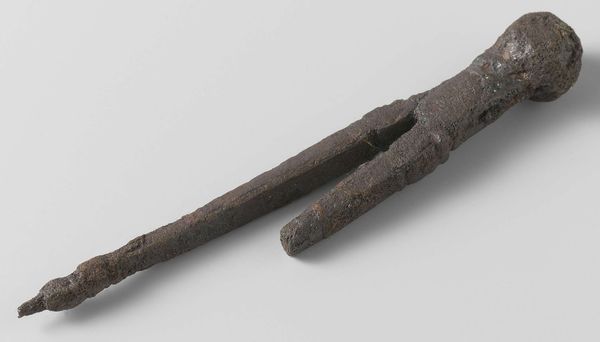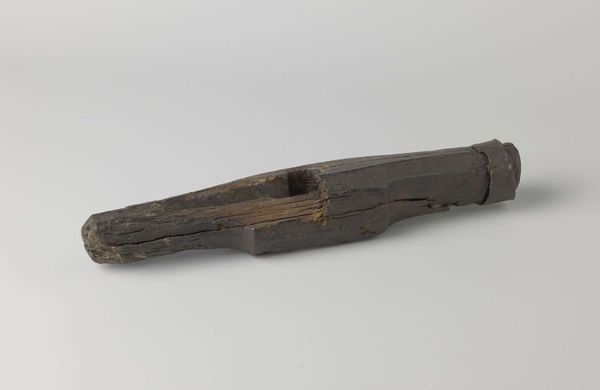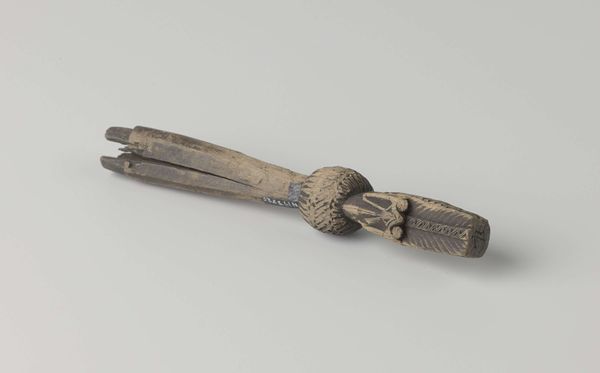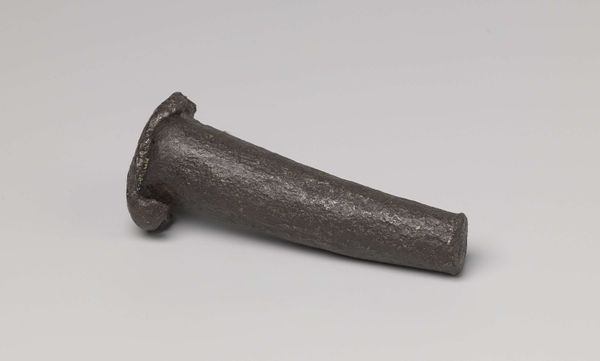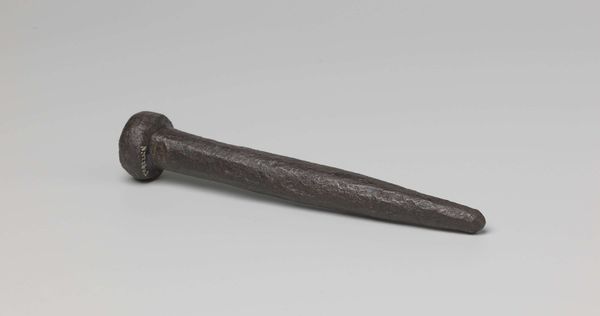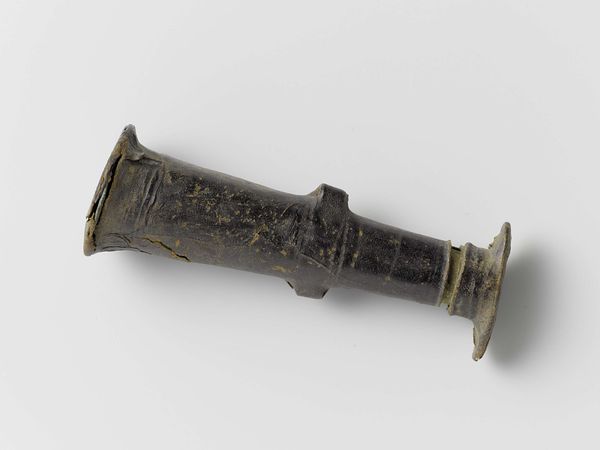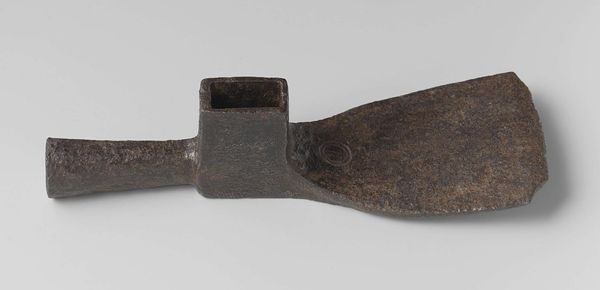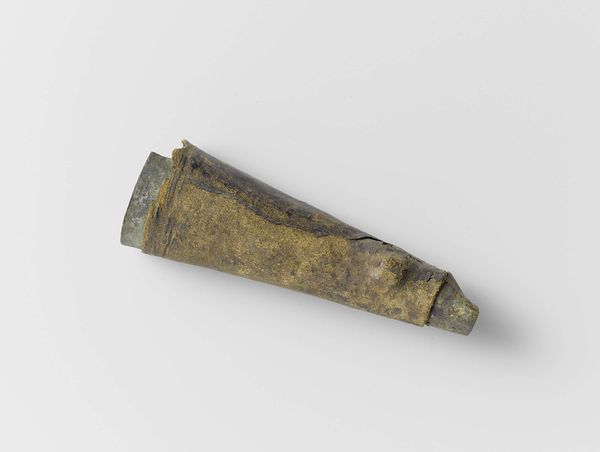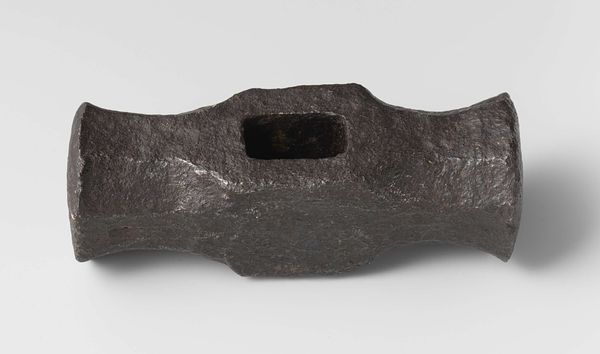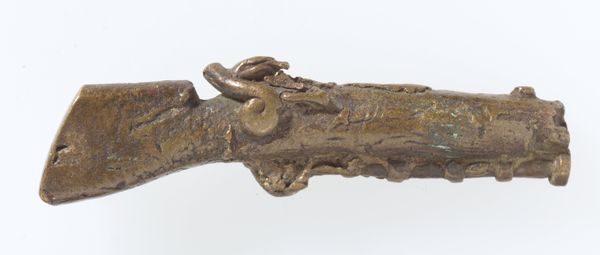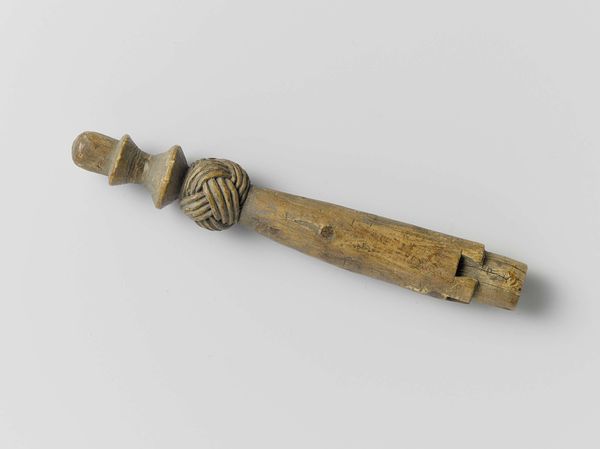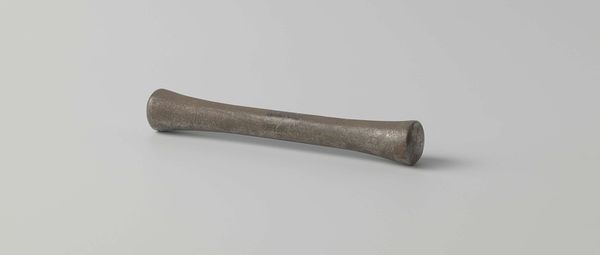
metal, sculpture
#
metal
#
sculpture
#
sculpture
#
decorative-art
Dimensions: Overall: 13 1/8 × 3 3/4 × 4 3/4 in. (33.3 × 9.5 × 12.1 cm)
Copyright: Public Domain
Curator: What strikes me immediately is the sheer craftsmanship, the painstaking labor involved in the making of this object. Editor: Right? At first glance, it's striking: dark, ornate, a bit mysterious, almost like a weapon instead of something so... domestic. Curator: Indeed. This is a 19th-century knife and fork case by Elkington & Co. Currently residing at the Metropolitan Museum of Art, it’s a powerful example of metalworking artistry. We should not dismiss this object because it's useful, but because of its relation to society. Editor: You're thinking about what it meant to own something so elaborate. I mean, think about the class implications here. Who possessed the means to commission something like this? What does that say about Victorian society and its values? The emphasis on decoration speaks to bourgeois culture and conspicuous consumption. Curator: Exactly! The maker’s labor, the material’s cost – it all contributes to its inherent social and economic value, transforming simple utility into a status symbol, through making and industrial manufacturing methods! The division of labor alone... some artisan had to carve those tiny floral designs on the body. The details become critical because these kinds of techniques transformed functional goods into complex artworks for the wealthy. Editor: Absolutely. The intricate designs themselves become a language. How does the iconography reinforce gender roles, imperialist narratives, or other dominant ideologies? It is not innocent but rather, symbolic of its time. Think of the objectification involved. Consider the access needed to raw materials! Curator: We must emphasize that craftspeople used advanced industrial techniques which blur boundaries of art, manufacture, and technology to achieve the surface decoration we see! Editor: Understanding decorative objects means uncovering power dynamics at play, understanding how class, gender, and coloniality manifest in what may appear like harmless or decorative possessions. What messages were embedded in such items, especially regarding who had access to the tools for dining, survival, and sustenance? Curator: By examining the means of its production and circulation, and consumption, we come to an awareness of the processes, technologies, and global dynamics of material culture. Editor: Right. This simple case holds a mirror up to 19th century culture. Curator: Illuminating the art, illuminating the world! Editor: Agreed, seeing it is like unlocking secrets.
Comments
No comments
Be the first to comment and join the conversation on the ultimate creative platform.
